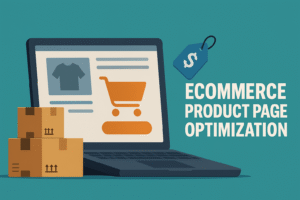Lean fulfillment is crucial for startups aiming to maximize efficiency while minimizing costs. In the competitive landscape of today’s market, startups often struggle to balance quality service and budget constraints.
Implementing lean fulfillment strategies can transform this challenge into an opportunity, enabling startups to streamline operations, reduce waste, and enhance customer satisfaction.
We will explore the essential components of lean fulfillment and provide actionable steps for startups to implement these strategies effectively. By focusing on practical, cost-saving methods and real-world examples, this article aims to equip startup founders and entrepreneurs with the tools needed to optimize their supply chain and order fulfillment processes.
Whether you’re looking to improve inventory management, reduce shipping costs, or enhance overall operational efficiency, lean fulfillment offers a viable path to achieving these goals.
Understanding Lean Fulfillment

Lean fulfillment is a strategic approach designed to optimize supply chain and fulfillment processes by minimizing waste and maximizing efficiency. Rooted in lean manufacturing principles, it focuses on delivering value to customers while utilizing the least amount of resources.
For startups, this means streamlining operations, reducing costs, and improving service quality without compromising performance.
The core of lean fulfillment includes several key principles. Just-in-Time (JIT) inventory is one such principle, emphasizing the receipt of materials and products only as needed. This approach minimizes storage costs and reduces the risk of overstocking, ultimately improving cash flow by aligning inventory orders with production schedules.
Value stream mapping is another essential tool in lean fulfillment, used to visualize the entire process and identify areas where resources are wasted. By systematically pinpointing and eliminating inefficiencies, startups can enhance overall productivity and streamline workflows, ensuring a more efficient operation.
Continuous improvement, or Kaizen, fosters a culture where every team member actively seeks ways to enhance processes and reduce waste. This principle encourages regular assessments and refinements, allowing startups to quickly adapt to changes and maintain high efficiency.
Building strong supplier relationships is also crucial. Reliable partnerships ensure a more dependable supply chain, often with better terms and conditions that lead to cost savings. Collaborating closely with suppliers can result in shared innovations and improvements in the fulfillment process, benefiting both parties.
Lean fulfillment offers significant benefits for startups. By minimizing waste and optimizing processes, it leads to substantial cost savings, including reduced overhead and lower inventory expenses due to the JIT approach. Enhanced efficiency is achieved through streamlined processes, which reduce delays and bottlenecks, resulting in faster fulfillment times and higher customer satisfaction.
Moreover, lean fulfillment enables startups to provide higher quality service by focusing on value and efficiency. This approach ensures timely deliveries and superior product quality, making startups more responsive to customer needs and market conditions. As a result, startups can build a competitive edge and thrive in their respective markets by implementing lean fulfillment principles.
Key Components of Lean Fulfillment
Implementing lean fulfillment in a startup involves several key components that work together to enhance efficiency and reduce costs. Understanding and integrating these components can significantly streamline your fulfillment processes.
Just-in-Time (JIT) Inventory is a pivotal aspect of lean fulfillment. This approach minimizes inventory costs by ensuring that materials and products are received only when needed. By reducing the amount of stock held in storage, startups can free up valuable cash flow and minimize the risk of overstocking and obsolescence.
JIT inventory requires precise demand forecasting and strong supplier relationships to ensure timely deliveries.
Value Stream Mapping is another critical tool in lean fulfillment. This technique involves visualizing the entire fulfillment process to identify and eliminate waste. By mapping out each step, startups can pinpoint inefficiencies, redundant activities, and bottlenecks.

This comprehensive overview allows for targeted improvements that streamline workflows and enhance overall productivity.
Continuous Improvement (Kaizen) is a fundamental principle that drives the lean fulfillment approach. This mindset encourages all team members to actively seek out ways to improve processes and reduce waste.
Regular assessments and feedback loops are essential to identify areas for enhancement and to implement changes effectively. By fostering a culture of continuous improvement, startups can remain agile and responsive to evolving market conditions and customer needs.
Building Strong Supplier Relationships is essential for successful lean fulfillment. Reliable suppliers ensure a steady flow of materials and products, reducing the risk of delays and disruptions. Collaborative partnerships with suppliers can lead to better terms, cost savings, and shared innovations.
Engaging with suppliers in a cooperative manner can also facilitate joint problem-solving and continuous improvement initiatives.
Incorporating Technology and Automation can further optimize lean fulfillment processes. Using affordable software solutions for inventory management, order processing, and demand forecasting can enhance accuracy and efficiency. Automation tools can streamline repetitive tasks, reduce human error, and free up staff to focus on more strategic activities.
Leveraging technology allows startups to scale their operations more effectively while maintaining lean principles.
Employee Training and Engagement play a crucial role in lean fulfillment. Ensuring that team members understand lean principles and are committed to continuous improvement is vital. Training programs should focus on lean methodologies, problem-solving skills, and the importance of efficiency.
Engaged employees who are invested in the company’s success are more likely to identify and act on opportunities for improvement.
By focusing on these key components, startups can successfully implement lean fulfillment strategies that drive efficiency, reduce costs, and enhance overall performance.
Steps to Implement Lean Fulfillment in Startups
Implementing lean fulfillment in a startup involves a series of strategic steps designed to optimize processes, minimize waste, and enhance efficiency. By following these steps, startups can effectively transition to a lean fulfillment model.
- Assess Current Fulfillment Processes: The first step is to conduct a thorough assessment of your existing fulfillment operations. Evaluate each stage of your supply chain to identify inefficiencies, bottlenecks, and areas of waste. This assessment should include a detailed analysis of inventory management, order processing, and shipping practices. Gathering data on these processes will provide a clear picture of where improvements are needed.
- Set Clear Objectives: Once you have a comprehensive understanding of your current fulfillment processes, define the specific goals you want to achieve with lean fulfillment. These objectives might include reducing inventory costs, shortening delivery times, improving order accuracy, or enhancing customer satisfaction. Clear, measurable goals will guide your efforts and help track progress.
- Develop a Lean Fulfillment Plan: Create a detailed plan outlining the steps necessary to transition to lean fulfillment. This plan should include timelines, resource allocation, and specific actions to address identified inefficiencies. Incorporate lean principles such as Just-in-Time inventory, value stream mapping, and continuous improvement into your strategy. Ensure that the plan is realistic and achievable, with milestones to monitor progress.
- Train Your Team: Successful implementation of lean fulfillment relies heavily on the engagement and skills of your team. Provide training on lean principles and practices to ensure that all employees understand the importance of efficiency and waste reduction. Encourage a culture of continuous improvement where team members are motivated to identify and address inefficiencies. Hands-on workshops, regular training sessions, and clear communication can reinforce these concepts.
- Implement and Monitor: Begin the implementation process by making incremental changes to your fulfillment operations. Start with small, manageable adjustments that can yield quick wins and build momentum. For example, you might begin by optimizing inventory levels or streamlining a specific step in the order processing workflow. Monitor the impact of these changes closely, using key performance indicators (KPIs) to measure success. Regularly review progress against your objectives and make adjustments as needed.
- Leverage Technology: Utilize affordable software solutions and automation tools to enhance your lean fulfillment efforts. Inventory management systems, order processing software, and demand forecasting tools can improve accuracy and efficiency. Automation can handle repetitive tasks, reduce human error, and free up staff to focus on more strategic activities. By integrating technology into your lean fulfillment strategy, you can scale operations more effectively while maintaining lean principles.
- Foster Continuous Improvement: Maintain a focus on continuous improvement by regularly assessing fulfillment processes and seeking feedback from your team. Encourage employees to suggest improvements and participate in problem-solving initiatives. Implement a system for tracking and evaluating the impact of changes, ensuring that successful practices are standardized and sustained. Continuous improvement should be an ongoing effort, allowing your startup to remain agile and responsive to changing market conditions and customer needs.
The journey to lean fulfillment requires commitment, collaboration, and a willingness to adapt, but the rewards of a streamlined, cost-effective fulfillment process are well worth the effort.
Cost-Saving Strategies for Lean Fulfillment
Implementing lean fulfillment is not just about streamlining processes; it’s also about finding innovative ways to save costs without compromising on service quality. Here are some effective cost-saving strategies that startups can employ to maximize efficiency and maintain a lean operation.
Leverage Technology: One of the most effective ways to reduce costs in fulfillment is by utilizing affordable software solutions for inventory management, order processing, and demand forecasting. Tools such as automated inventory tracking systems can help maintain optimal stock levels, preventing both overstocking and stock outs.
Additionally, using cloud-based platforms can minimize the need for expensive IT infrastructure, reducing overhead costs.
Outsource Fulfillment: For many startups, outsourcing fulfillment to third-party logistics (3PL) providers can lead to significant cost savings. 3PLs offer warehousing, order processing, and shipping services, allowing startups to avoid the high costs associated with maintaining their own fulfillment centers.

By leveraging the expertise and infrastructure of a 3PL, such as ShipBuddies, startups can scale their operations more effectively and focus on core business activities.
Optimize Packaging: Efficient packaging can greatly reduce shipping costs and improve sustainability. Startups should use packaging materials that are cost-effective yet protective enough to prevent damage. Additionally, optimizing package sizes to match the dimensions of the products can minimize shipping expenses by reducing dimensional weight charges.
Implementing reusable and recyclable packaging materials can also contribute to cost savings and enhance the company’s environmental credentials.
Streamline Shipping: Negotiating with carriers for better rates and exploring various shipping options can significantly cut down shipping costs. Startups should analyze their shipping data to identify patterns and leverage volume discounts. Consolidating shipments and using regional carriers for last-mile delivery can further reduce costs.
Offering customers multiple shipping options allows them to choose based on their budget and urgency, potentially saving on expedited shipping fees.
Implement a Just-in-Time Inventory System: Just-in-Time (JIT) inventory management reduces the need for large warehousing spaces and minimizes capital tied up in unsold stock. By aligning inventory levels with actual demand, startups can significantly cut down storage costs and reduce the risk of obsolete inventory.
JIT requires strong supplier relationships and accurate demand forecasting to ensure timely delivery of materials and products.
Build Strong Supplier Relationships: Establishing reliable and collaborative relationships with suppliers can lead to better terms and conditions, bulk purchase discounts, and more flexible payment options. Startups should work closely with suppliers to improve lead times and negotiate favorable rates.
Regular communication and collaboration can also help in joint problem-solving and continuous improvement initiatives.
Utilize Drop Shipping: For certain products, using a dropshipping model can eliminate the need for warehousing and handling inventory altogether. In drop shipping, products are shipped directly from the supplier to the customer, reducing the startup’s logistics and storage costs.
This model is particularly useful for startups looking to expand their product range without the associated inventory risk.
Continuous Process Improvement: Regularly reviewing and refining fulfillment processes is crucial for maintaining a lean operation. Startups should implement a system for continuous improvement, where feedback is actively sought and changes are made to enhance efficiency.
Small, incremental improvements can lead to significant cost savings over time.
Adopt Sustainable Practices: Sustainable practices often lead to cost savings in the long run. Reducing waste, recycling materials, and optimizing energy usage can lower operating costs.
Additionally, promoting sustainability can enhance brand reputation and attract environmentally-conscious customers.
These approaches not only reduce costs but also contribute to a more agile and responsive fulfillment operation, positioning startups for long-term success.
Challenges and Solutions in Lean Fulfillment
Implementing lean fulfillment in startups presents several challenges, but each comes with solutions that can help overcome these obstacles and ensure a smooth transition to more efficient operations.

Challenge 1: Accurate Demand Forecasting
One of the biggest challenges in lean fulfillment is accurately predicting demand to implement Just-in-Time (JIT) inventory effectively. Inaccurate forecasts can lead to stockouts or overstocking, both of which negate the benefits of JIT.
Solution: Utilize advanced demand forecasting tools that incorporate historical sales data, market trends, and seasonality. Machine learning algorithms can improve forecasting accuracy over time by learning from patterns and anomalies. Regularly review and adjust forecasts based on real-time sales data and market conditions to stay agile.
Challenge 2: Supplier Reliability
Lean fulfillment relies heavily on the timely delivery of materials and products. Unreliable suppliers can disrupt the JIT system, leading to production delays and missed deadlines.
Solution: Build strong relationships with reliable suppliers who understand and support your lean objectives. Establish clear communication channels and set expectations for lead times and quality standards. Having backup suppliers can also mitigate the risk of disruptions. Regularly assess supplier performance and work collaboratively to address any issues.
Challenge 3: Initial Implementation Costs
Transitioning to lean fulfillment can involve significant upfront costs, such as investing in new technology, training staff, and restructuring processes.
Solution: Start with a pilot project to implement lean principles in a small part of your fulfillment process. This allows you to test the effectiveness and identify potential issues without a large initial investment. Use the insights gained from the pilot to refine your approach and gradually scale up lean implementation. Seek cost-effective technology solutions and consider phased investments to manage expenses.
Challenge 4: Resistance to Change
Employees may resist changes to established processes, especially if they are accustomed to traditional fulfillment methods. This resistance can hinder the successful implementation of lean fulfillment.
Solution: Foster a culture of continuous improvement by involving employees in the transition process. Provide comprehensive training on lean principles and demonstrate how these changes will benefit both the organization and the employees. Encourage feedback and suggestions from the team to make them feel valued and invested in the new system. Highlight quick wins and celebrate successes to build momentum and buy-in.
Challenge 5: Maintaining Quality Control
With lean fulfillment focusing on efficiency and speed, maintaining high-quality standards can be challenging. Rapid changes and reduced inventory can sometimes lead to quality issues being overlooked.
Solution: Implement robust quality control measures at every stage of the fulfillment process. Use standardized procedures and checklists to ensure consistency. Incorporate quality checks into the JIT system to catch and address issues early. Continuously monitor quality metrics and provide training to employees on maintaining quality standards even under tight timelines.
Challenge 6: Data Management and Analysis
Effectively managing and analyzing the vast amount of data generated in a lean fulfillment system can be overwhelming. Poor data management can lead to inaccurate insights and hinder decision-making.
Solution: Invest in integrated software solutions that streamline data collection and analysis. These tools should provide real-time visibility into key metrics such as inventory levels, order status, and supplier performance. Use data analytics to gain actionable insights and make informed decisions. Ensure that your team is trained to interpret and utilize data effectively.
Challenge 7: Balancing Cost and Speed
Achieving a balance between cost-efficiency and fast delivery times is crucial but challenging in lean fulfillment. Focusing too much on cost-cutting can slow down the fulfillment process, while prioritizing speed may increase expenses.
Solution: Identify and prioritize the most critical areas where cost and speed can be balanced effectively. Use value stream mapping to eliminate waste and optimize workflows. Negotiate with suppliers and carriers for better rates without compromising on speed. Regularly review and adjust strategies to maintain an optimal balance between cost and speed.
Addressing these challenges with targeted solutions allows startups to successfully implement lean fulfillment strategies that enhance efficiency, reduce costs, and maintain high standards of quality and customer satisfaction.
The Path to Lean Fulfillment Success
Implementing lean fulfillment strategies can be a game-changer for startups looking to maximize efficiency and minimize costs. By focusing on principles such as Just-in-Time inventory, value stream mapping, continuous improvement, and strong supplier relationships, startups can streamline their operations and enhance overall productivity.
The steps to implement lean fulfillment, from assessing current processes to fostering a culture of continuous improvement, provide a clear roadmap for startups to follow.
Cost-saving strategies, including leveraging technology, outsourcing fulfillment, optimizing packaging, and streamlining shipping, further enhance the benefits of lean fulfillment. Addressing the challenges with targeted solutions ensures that startups can maintain lean operations while staying agile and responsive to market changes.
Incorporating lean fulfillment principles not only drives operational excellence but also positions startups to thrive in a dynamic business environment. Remember that continuous improvement and adaptability are key to maintaining lean fulfillment and achieving sustained growth. Start evaluating your fulfillment processes today, and take the first steps towards a more efficient and cost-effective future.
If you need help with optimizing your order fulfillment process, reach out to us today.









